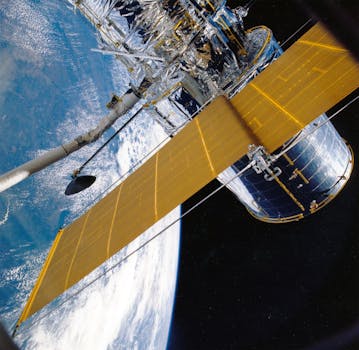Beyond Earth: How Recent Advances Are Shaping Satellite Telecommunications

Beyond Earth: How Recent Advances Are Shaping Satellite Telecommunications
Recent advances in satellite telecommunications are revolutionizing the way we communicate beyond Earth’s boundaries. With the help of cutting-edge technology, satellite telecommunications are becoming more efficient, reliable, and accessible. Beyond Earth, satellite telecommunications are playing a vital role in connecting people, organizations, and governments across the globe.
Satellite telecommunications have come a long way since the launch of the first commercial communications satellite, Intelsat 1, in 1965. Today, there are thousands of satellites orbiting the Earth, providing a wide range of services, including telecommunications, navigation, weather forecasting, and Earth observation. The recent advances in satellite telecommunications are driven by the increasing demand for global connectivity, the growing need for high-speed data transfer, and the development of new technologies such as satellite constellations and phased array antennas.
Advances in Satellite Technology
One of the significant advances in satellite technology is the development of high-throughput satellites (HTS). HTS satellites are designed to provide high-speed data transfer rates, making them ideal for applications such as broadband internet, video streaming, and cloud computing. These satellites use advanced technologies such as spot beams and frequency reuse to increase their capacity and efficiency. For example, the ViaSat-1 satellite, launched in 2011, was one of the first HTS satellites and offered speeds of up to 100 Gbps.
Another significant advance in satellite technology is the development of satellite constellations. Satellite constellations are networks of satellites that work together to provide global coverage and connectivity. These constellations are designed to provide low-latency, high-speed data transfer, and are ideal for applications such as IoT, 5G, and satellite broadband. For example, the OneWeb constellation, launched in 2019, consists of over 600 satellites and provides global coverage and connectivity.
Applications of Satellite Telecommunications
Satellite telecommunications have a wide range of applications, including telecommunications, navigation, weather forecasting, and Earth observation. One of the most significant applications of satellite telecommunications is in the provision of broadband internet services. Satellite broadband services are ideal for remote and underserved areas where terrestrial infrastructure is limited or non-existent. For example, the HughesNet satellite broadband service provides high-speed internet access to millions of people in the United States and around the world.
Satellite telecommunications are also used in navigation systems such as GPS, GLONASS, and Galileo. These systems provide location information and timing signals to users around the world, and are critical for applications such as aviation, maritime, and land transportation. For example, the GPS system, launched in 1978, provides location information and timing signals to over 1 billion users around the world.
Future of Satellite Telecommunications
The future of satellite telecommunications is exciting and promising. With the help of cutting-edge technology, satellite telecommunications are becoming more efficient, reliable, and accessible. The development of new technologies such as quantum communications and artificial intelligence is expected to further enhance the capabilities of satellite telecommunications. For example, quantum communications are expected to provide secure and reliable data transfer, while artificial intelligence is expected to improve the efficiency and automation of satellite operations.
In conclusion, recent advances in satellite telecommunications are revolutionizing the way we communicate beyond Earth’s boundaries. With the help of cutting-edge technology, satellite telecommunications are becoming more efficient, reliable, and accessible. As the demand for global connectivity and high-speed data transfer continues to grow, satellite telecommunications are expected to play an increasingly important role in connecting people, organizations, and governments across the globe.





